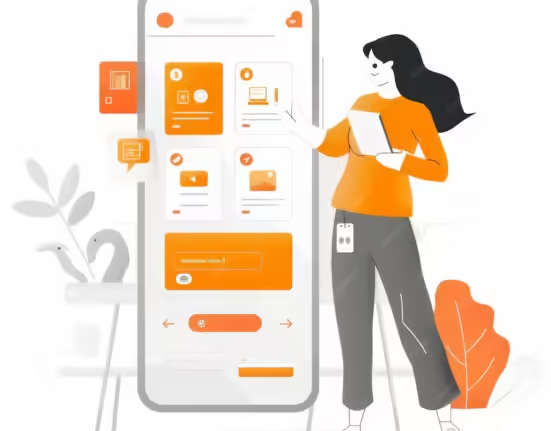Email marketing remains one of the most effective digital marketing strategies, offering businesses a direct line to their audience’s inboxes. Despite the rise of social media and other communication channels, email marketing continues to deliver impressive returns on investment (ROI) and plays a crucial role in customer engagement and retention. This comprehensive guide will explore the essentials of email marketing, its benefits, strategies for success, and best practices to enhance your campaigns.
What is Email Marketing?
Email marketing is a form of direct marketing that uses email to promote products, services, or content to a targeted audience. It involves sending emails to a list of subscribers who have opted in to receive communications from a brand. These emails can range from promotional offers and newsletters to personalized recommendations and transactional messages.
How Email Marketing Works
Email marketing involves several key steps:
- Building an Email List: The foundation of email marketing is a quality email list, which consists of individuals who have voluntarily subscribed to receive emails from your brand. This list is typically built through sign-up forms on your website, social media, or during the purchase process.
- Segmenting the Audience: Segmentation involves dividing your email list into smaller groups based on specific criteria, such as demographics, purchase history, or engagement levels. This allows for more targeted and personalized email campaigns.
- Creating Email Campaigns: Once your list is segmented, you can create email campaigns tailored to each group. This includes designing the email, writing the content, and setting up automation if necessary.
- Sending Emails: After crafting your email, it’s time to send it to your subscribers. This can be done manually or through automated systems that deliver emails based on specific triggers, such as a subscriber’s behavior or time zone.
- Analyzing Performance: After your emails are sent, it’s crucial to analyze their performance using metrics like open rates, click-through rates (CTR), conversion rates, and unsubscribe rates. This data helps refine future campaigns for better results.
Benefits of Email Marketing
Email marketing offers numerous advantages, making it a vital component of any digital marketing strategy.
High ROI
Email marketing is known for its high return on investment (ROI). According to various studies, businesses can expect an average ROI of $42 for every $1 spent on email marketing. This makes it one of the most cost-effective marketing channels available.
Direct and Personalized Communication
Email provides a direct line of communication between your brand and your audience. Unlike social media, where your message might get lost in the noise, email lands directly in the recipient’s inbox. Additionally, email marketing allows for personalization, enabling you to tailor content to individual subscribers based on their preferences, behavior, and demographics.
Builds Strong Customer Relationships
Email marketing helps build and nurture relationships with your audience. By regularly sending valuable content, updates, and offers, you can keep your brand top of mind and foster loyalty among your subscribers. Engaging emails can turn one-time buyers into repeat customers and even brand advocates.
Drives Traffic and Conversions
Email marketing is an effective tool for driving traffic to your website or online store. Well-crafted emails with clear calls-to-action (CTAs) can encourage recipients to visit your site, explore your products, and make a purchase. Additionally, email marketing can be used to promote content, events, or special offers that drive conversions.
Supports Other Marketing Channels
Email marketing complements other marketing channels, such as social media, content marketing, and paid advertising. For example, you can use email to promote your latest blog post, share social media updates, or announce a new product launch. This integrated approach helps create a cohesive and consistent brand experience across all touchpoints.
Types of Email Marketing Campaigns
Email marketing encompasses various types of campaigns, each serving different purposes and engaging subscribers in unique ways.
Promotional Emails
Promotional emails are designed to promote a specific offer, such as a discount, sale, or new product. These emails often include persuasive language, eye-catching visuals, and a strong CTA to encourage recipients to take action.
Newsletters
Newsletters are regular emails that provide subscribers with valuable content, updates, and information related to your brand. They can include articles, tips, product recommendations, company news, and more. Newsletters help keep your audience engaged and informed, while also building brand loyalty.
Welcome Emails
Welcome emails are sent to new subscribers or customers shortly after they sign up or make a purchase. These emails introduce your brand, set expectations, and often include a special offer or incentive to encourage further engagement. A well-crafted welcome email can make a strong first impression and lay the foundation for a lasting relationship.
Transactional Emails
Transactional emails are automated emails triggered by a specific action taken by the recipient, such as making a purchase, signing up for an account, or requesting a password reset. Examples include order confirmations, shipping notifications, and account updates. While transactional emails are primarily functional, they also present opportunities for cross-selling, upselling, and reinforcing brand messaging.
Re-Engagement Emails
Re-engagement emails are designed to win back inactive subscribers or customers who haven’t interacted with your brand in a while. These emails often include special offers, reminders, or requests for feedback to encourage recipients to re-engage with your brand. Re-engagement campaigns can help reduce churn and revitalize your email list.
Drip Campaigns
Drip campaigns, also known as automated email sequences, involve sending a series of emails to subscribers over a set period. These emails are often triggered by specific actions, such as signing up for a free trial, downloading a resource, or abandoning a cart. Drip campaigns help nurture leads, guide subscribers through the sales funnel, and increase conversions.
Best Practices for Email Marketing
To maximize the effectiveness of your email marketing efforts, it’s essential to follow best practices that enhance deliverability, engagement, and conversions.
Build and Maintain a Quality Email List
A successful email marketing campaign starts with a high-quality email list. Focus on organic list-building methods, such as offering valuable content in exchange for email sign-ups or using sign-up forms on your website and social media channels. Avoid purchasing email lists, as they often contain unengaged or irrelevant contacts, which can harm your deliverability and reputation.
Personalize Your Emails
Personalization is key to making your emails stand out in a crowded inbox. Use the recipient’s name in the subject line and email body, and tailor the content to their preferences and behaviors. For example, you can send personalized product recommendations based on past purchases or content suggestions based on their interests.
Optimize for Mobile Devices
With the majority of emails now being opened on mobile devices, it’s crucial to ensure your emails are mobile-friendly. Use a responsive design that adapts to different screen sizes, keep your content concise, and use large, clickable buttons for CTAs. Test your emails on various devices and email clients to ensure a consistent and user-friendly experience.
Craft Compelling Subject Lines
The subject line is the first thing recipients see, and it plays a significant role in determining whether they open your email. Craft subject lines that are concise, relevant, and attention-grabbing. Consider using personalization, curiosity, urgency, or humor to increase open rates. Avoid spammy words or excessive punctuation, as these can trigger spam filters.
Use Clear and Engaging CTAs
A strong call-to-action (CTA) is essential for driving conversions from your emails. Make sure your CTA is clear, concise, and visually prominent within the email. Use action-oriented language that tells recipients exactly what you want them to do, such as “Shop Now,” “Learn More,” or “Get Started.”
Test and Optimize Your Campaigns
Continuous testing and optimization are key to improving your email marketing performance. Conduct A/B tests on different elements of your emails, such as subject lines, content, CTAs, and send times. Analyze the results to determine what resonates best with your audience, and use these insights to refine your future campaigns.
Monitor and Analyze Performance
Regularly monitor the performance of your email campaigns using key metrics like open rates, click-through rates, conversion rates, and unsubscribe rates. Use this data to identify trends, measure the effectiveness of your campaigns, and make data-driven decisions to enhance your strategy.
Conclusion
Email marketing remains a powerful tool for businesses looking to engage their audience, build relationships, and drive conversions. By understanding the different types of email campaigns, following best practices, and continuously optimizing your efforts, you can create effective email marketing strategies that deliver impressive results. Whether you’re a small business or a large enterprise, email marketing should be a cornerstone of your digital marketing strategy, helping you reach and connect with your audience in a meaningful way.










Leave feedback about this